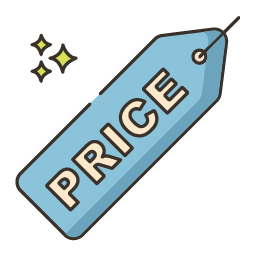In this article, we’ll unravel the secrets of selling art on Facebook Marketplace including how to create an irresistible listing, navigate price negotiations, and overcome common challenges.

Discover how to showcase your art, engage with potential buyers, and maximize your profit in the bustling online marketplace. Whether you’re a newbie or a seasoned seller, these tips and strategies will equip you to thrive in the competitive world of Facebook Marketplace.
How Good is Facebook Marketplace for Artists?
Is Facebook Marketplace a goldmine for artists? Absolutely! This platform opens up a world of opportunities, putting your art in front of a global audience thanks to Facebook’s colossal user base. It’s user-friendly, seamlessly integrated with your Facebook account, and allows you to set up shop with ease.
The best part? Facebook Marketplace doesn’t dip into your profits – there are no listing or selling fees, so every penny you earn is yours to keep. Of course, like any bustling marketplace, it has its challenges. Standing out among a myriad of listings, navigating price negotiations, and building credibility are part of the journey.
But fear not! With a dash of strategic planning – crafting irresistible listings, promoting your art vigorously, and harnessing the power of Facebook’s features – you can conquer these challenges. Whether you’re a budding artist taking your first step into online sales or a seasoned artist aiming to cast a wider net, Facebook Marketplace is a potent tool to have in your art marketing arsenal.
An Introduction to Facebook Marketplace for Artists
Facebook Marketplace is a bustling digital bazaar where you can sell anything from vintage furniture to, you guessed it, art! With its user-friendly interface and integration with your Facebook account, it’s an ideal platform for artists who are new to selling art online.
It offers a unique platform to showcase your talent and promote your art to a vast audience. It’s like having your own online store, right within your Facebook account!
Here are some reasons why artists should use Facebook to sell their art:
- Reach a Wider Audience: With over 2.8 billion monthly active users, Facebook provides an unparalleled platform to showcase your art to a global audience.
- Easy Set-Up: If you already have a Facebook account, setting up shop on Facebook Marketplace is a breeze. No need to create a separate online store or website – your art is just a click away from potential buyers.
- Direct Communication with Buyers: Facebook Marketplace allows you to chat directly with potential buyers, answer their queries, and build a relationship that can lead to repeat sales.
- No Listing Costs, No Selling Costs: Unlike other platforms that charge a fee for listing or selling your art, Facebook Marketplace is completely free. This means you get to keep all the profits from your sales, making it a cost-effective option for artists.
The Potential of Facebook Marketplace

Selling art on Facebook Marketplace extends beyond the simple goal of making a quick profit. It presents a unique opportunity for you to build your brand, engage with your audience, and transform your passion into a profitable venture.
One of the key aspects of this process is brand building. Facebook Marketplace serves as a platform where you can establish your unique artistic style and brand. By posting consistently, using a consistent tone in your descriptions, and creating a visually cohesive collection of listings, you can effectively communicate your brand’s identity and aesthetic to potential buyers.
Engagement is another crucial element. It’s not just about posting your art and waiting for buyers to come. It’s about actively engaging with your audience through direct messages, comments, and likes. This interaction not only helps you understand your audience better but also allows you to create art that truly resonates with them.
Finally, there’s the aspect of profitability. With strategic pricing and effective promotion, Facebook Marketplace can become a profitable channel for selling your art. It’s not just about listing your art, but also about promoting it effectively to reach a wider audience. For guidance on how to promote your products on Facebook, you can refer to this helpful guide. By combining these strategies, you can leverage Facebook Marketplace to its full potential and turn your passion for art into a successful business.
| 10 Tips for Success Selling Art on Facebook Marketplace |
|---|
| 1. Optimize Your Listing Title: Use relevant keywords such as the brand, model, color, or condition of the item. This will help your listing appear in relevant search results. For example, instead of just “Abstract Painting”, consider “Abstract Acrylic Painting on Canvas, Blue and Green, 24×36 inches”. |
| 2. Price Your Artwork Appropriately: Research the market and price your items accordingly. Consider the condition, price range, and demand for the item. Look at similar pieces of art on the marketplace to get a sense of what buyers are willing to pay. |
| 3. Use High-Quality Photos: Provide multiple perspectives of the product. Make sure the photos are clear and well-lit to showcase your artwork in the best possible way. Include close-ups of any intricate details and a photo of the artwork in a frame or on a wall to give buyers a sense of scale. |
| 4. Describe the Item Condition Clearly: Be honest about the condition of your artwork. If there are any imperfections, make sure to mention them to avoid any potential disputes with the buyer. For instance, if there’s a small scratch on the frame, include this in your description. |
| 5. Highlight the Benefits: Position your listing from the buyer’s perspective. Highlight the benefits and help them visualize how they can use or display the artwork. For example, you could mention how the artwork could brighten up a room or be a conversation starter. |
| 6. Show the Savings: If your artwork is priced lower than its usual retail price, highlight this to show potential savings to the buyer. For instance, if your artwork is typically valued at $200 but you’re selling it for $150, make sure to highlight the $50 savings. |
| 7. Specify Payment and Pickup Terms: Clearly state your preferred payment methods and provide options for scheduling meetups. This will make the transaction process smoother for both you and the buyer. For example, you could mention that you accept cash or digital payments and that the artwork can be picked up on weekends. |
| 8. Follow Up with All Leads: Engage potential buyers and filter out those who show genuine interest. Be direct and cordial in communication to identify serious buyers. If someone expresses interest in your artwork, make sure to respond promptly and answer any questions they might have. |
| 9. Repost Your Listing: If your item doesn’t sell, consider reposting it. You might reach a new audience at a different time. Updating the photos or description can also help attract more attention to your listing. |
| 10. Be Persistent and Adaptable: Selling on Facebook Marketplace can be challenging, but don’t get discouraged if you don’t see immediate results. Keep refining your strategy and adapting to market trends. If one type of artwork isn’t selling well, consider experimenting with different styles or mediums. |
Crafting Irresistible Listings

Creating compelling listings is a crucial way to promote your art effectively on Facebook Marketplace. A well-crafted listing can attract Facebook users, entice them to click, and ultimately lead to sales. Let’s explore how you can optimize your listings to sell more art.
A. Showcasing Your Art in the Best Light
High-Quality Photos: Use clear, well-lit photos to showcase your art. Capture your work from various angles and include close-ups to highlight details. [Here’s a guide]
Include a Video: If possible, include a video showcasing your art. This can provide a more comprehensive view and create a stronger connection with potential buyers.
Detailed Descriptions: Describe your art accurately and enticingly. Include details about the medium, size, inspiration behind the work, and any other relevant information.
Art’s Story: Share the story behind your art. This can create an emotional connection with potential buyers and increase its perceived value.
B. Pricing Your Art Right
Market Research: Look at how other artists price similar work on Facebook Marketplace to gauge the art market. This can provide a benchmark for pricing your art.
Value Perception: Remember, the price of your art can influence how it’s perceived. Pricing it too low might make it seem less valuable, while a high price might deter potential buyers. Strike a balance.
Flexible Pricing: Indicate if you’re open to negotiation. This can encourage interested buyers to reach out and start a conversation.
C. Crafting a Compelling Listing Description
Keyword-optimized Title: Use relevant keywords in your title to make it easier for potential buyers to find your art. For example, if you’re selling a landscape painting, include “landscape painting” in your title.
Highlight Benefits: Help buyers visualize how your art can enhance their space. For example, you might mention that a bright, colorful painting can liven up a room.
Clear Pricing and Payment Terms: Clearly state your price and preferred payment methods to avoid any confusion.
Call to Action: Encourage potential buyers to take action. This could be as simple as “Message me for more details” or “Click ‘Buy Now’ to make this stunning piece yours.”
D. Promoting Your Listing
Share with Your Facebook Friends: Sharing your listing with your Facebook friends is a simple yet effective way to promote your art. They might not be interested in buying, but they might know someone who is.
Facebook Marketing: Consider using Facebook ads to reach a larger audience. While this involves an investment, it can be a powerful tool to sell your work, especially if your art is available in larger quantities. Here’s a guide on how to get started with Facebook ads.
Leverage Other Social Platforms: Don’t limit yourself to Facebook. Share your listing on other social platforms like Instagram or Pinterest to reach a wider audience.
Engage with Potential Buyers: Be proactive in engaging with people who show interest in your art. Respond promptly to messages and comments to keep the conversation going.
Remember, selling art on Facebook Marketplace is not just about listing it and waiting for buyers. Many artists have found success by actively promoting their listings, engaging with potential buyers, and continuously refining their approach based on what works.
Maximizing Profitability: Overcoming Challenges

Selling art on Facebook Marketplace can be a game-changer for independent artists looking to make sales and expand their reach. However, like any online art gallery, it comes with its own set of challenges. Here’s how you can navigate these obstacles and keep your art business thriving.
A. Standing Out in the Crowd: Differentiating Your Art
With various types of art available on Facebook Marketplace, standing out can be a challenge. Here are some strategies to make your artwork shine:
B. Navigating Price Negotiations and Low-ball Offers

Price negotiations are an integral aspect of selling art online, and this holds especially true on platforms like Facebook Marketplace. Navigating these negotiations successfully involves a balance of understanding your worth and demonstrating flexibility.
Firstly, it’s essential to know your worth as an artist. Determine a minimum price that you’re willing to accept for your art and adhere to it. This price should reflect the time, effort, materials, and creativity that went into creating the piece. It’s crucial not to let low-ball offers undermine the value of your work. Remember, every piece of art is unique and holds a value that goes beyond just the cost of materials.
While standing firm on your worth is important, it’s equally vital to show some willingness to negotiate. Being open to reasonable negotiations doesn’t mean undervaluing your work; instead, it’s about finding a price point that both you and the buyer find acceptable. This flexibility can often be the key to closing a sale and can lead to a satisfied buyer who may return for future purchases.
C. Building Professional Credibility on Facebook Marketplace
Building credibility on Facebook Marketplace can be challenging, particularly for those new to the platform. However, there are several strategies you can employ to enhance your professional image and trustworthiness.
Firstly, ensure your profile is complete and professional-looking. This includes a clear profile picture, an engaging cover photo, and a well-crafted bio on your Facebook page. These elements give potential buyers a snapshot of who you are and what they can expect from your art.
Secondly, make an effort to collect reviews from your satisfied customers. Positive reviews not only significantly boost your credibility but also serve as a powerful tool to attract more buyers. They provide social proof that others have purchased and appreciated your art, making new potential buyers more confident in their decision to purchase from you.
If you have a website or are active on other social platforms like Instagram, ensure you link these to your Facebook page. This not only drives traffic to your other online spaces but also provides potential buyers with more comprehensive information about your work. This multi-platform presence can enhance your professional image and increase buyer confidence, ultimately leading to more sales.
D. Overcoming Shipping and Payment Challenges
When it comes to shipping larger pieces of art, it’s important to explore various options. Different courier companies offer a range of prices and services, so take the time to find the most cost-effective and reliable solution. Once you’ve established your shipping method, ensure you include clear and detailed shipping information in your listings. This helps to manage buyer expectations and prevent any misunderstandings.
In terms of payment, prioritizing security is paramount. Using secure payment methods not only protects you as the seller but also instills confidence in your buyers. While Facebook does offer its own payment system, it’s not available in all regions. As such, it’s wise to consider widely accepted alternatives such as PayPal. This platform is renowned for its buyer and seller protection policies, making it a trustworthy choice for online transactions.
While Facebook Marketplace is a fantastic platform for selling art, it’s not the only strategy available on Facebook. The social media giant offers numerous other avenues like Facebook Pages, Groups, and Ads to showcase and sell your artwork. To explore these additional strategies and learn how to maximize your art sales on Facebook, check out our detailed article Facebook Artistry: Your Guide on How to Sell Art on Facebook.
Remember, even if your art does not sell immediately, don’t get discouraged. It can take time to build an audience and start making consistent sales on Facebook Marketplace. Keep refining your approach, learn from other artists who sell their work online, and stay persistent. Your next big sale might be just around the corner!
Staying Safe and Secure: Protecting Yourself from Scams on Facebook Marketplace
As you connect with potential buyers and promote and sell your art online, it’s crucial to stay vigilant and protect yourself from potential scams. Here’s how you can ensure a safe and secure selling experience on Facebook Marketplace.
A. Recognizing Common Scams and Red Flags
Unfortunately, scams can happen on any online platform, and Facebook Marketplace is no exception. Here are some common red flags to watch out for:
- Buyers Who Won’t Meet in Person: An essential aspect of Facebook Marketplace is the ability to meet buyers in person, especially for local sales. If a buyer insists on not meeting or wants to use a non-secure payment method, it could be a red flag. This might indicate that the buyer is trying to avoid personal identification or planning to dispute the payment later. Always insist on secure payment methods and, where possible, meet in a public place for the transaction.
- Overpayment Scams: This is a common scam where a buyer offers to pay more than the asking price for your artwork and then asks for a refund of the difference. The scam typically involves a fraudulent check or money order that will eventually bounce, but only after you’ve already refunded the overpaid amount. To avoid falling victim to this scam, never accept overpayments and always wait for any checks or money orders to clear before handing over your art.
- Shipping Scams: In this type of scam, a buyer insists on using their own shipping service. They may provide a fake shipping label or ask you to pay a third-party shipper, only to disappear once the artwork is shipped. They might also claim that they will reimburse the shipping costs but never do. To avoid this, always use a reliable shipping service that you trust and never send an item before receiving full payment.
B. Verifying Buyer Credibility and Ensuring Secure Transactions
- Check Buyer Profiles: Before agreeing to a sale, it’s crucial to verify the credibility of your buyer. You can do this by checking their Facebook profile. Look for signs of authenticity such as a clear profile picture, a reasonable number of friends, and regular past activity. Be wary of profiles that are recently created or lack these elements, as they may indicate a scammer. Also, check if they have been reviewed by other sellers or if they have interacted positively with other listings. This can give you a good idea of their credibility and intent.
- Use Secure Payment Methods: When it comes to transactions, safety should be your priority. For this reason, use Facebook’s own payment system, which offers protection for both buyers and sellers. If this isn’t available in your region, consider using another secure method such as PayPal. These platforms offer buyer and seller protection features, ensuring that your transaction is secure. It’s important to avoid sharing your bank account details directly with buyers, as this can expose you to potential fraud. Also, be skeptical of buyers who insist on using unconventional payment methods, as they may be trying to scam you.
- Meet in Public Places: If a buyer is local and wants to pick up the artwork in person, always arrange to meet in a public place. This is not only safer, but it also ensures that there are likely to be people around in case of any issues. Many police stations offer their parking lots as safe meetup spots for online transactions. If this isn’t an option, choose a busy, well-lit area such as a mall or a popular park. Always let someone know where you’re going and when you expect to return. Remember, your safety is paramount, and any genuine buyer will understand and respect this.
C. Taking Action Against Scammers
- Report Suspicious Activity: If you encounter any suspicious activity or potential scams, report it to Facebook immediately. You can do this by clicking “Report” on the specific listing or buyer’s profile. Facebook will investigate the issue to ensure the platform’s safety.
- Keep Records: Maintain records of all your communications and transactions. These records can be crucial in case of disputes or for tracking your sales. Use a simple spreadsheet or a dedicated tool to help with this process.
The good news is that Facebook is continually developing new ways to sell and improving its algorithms to provide a safer selling environment. However, it’s essential to stay vigilant and take steps to protect yourself.
Seize the Opportunity and Thrive on Facebook Marketplace
Whether you’re selling prints, original artwork, or custom pieces, this platform provides a unique opportunity to sell your art directly to art collectors and enthusiasts.
One of the key benefits of selling art on Facebook Marketplace is the access to a vast audience. With your profile on Facebook and a dedicated page to sell your art, you’re just a few clicks away from a global audience that could fall in love with your work.
Another significant advantage is cost-effectiveness. Unlike other platforms, Facebook allows you to sell without incurring hefty selling fees. This means more profit for your hard work and creativity.
For those who already have a presence on Instagram, Facebook allows seamless integration. You can link your Instagram to your Facebook business page, providing a unified selling experience across both platforms.
However, it’s essential to remember that success doesn’t happen overnight. It might take time to find what works well on Facebook Marketplace for your art sales. Patience, experimentation, and consistency are key.
In the end, what matters most is that you enjoy the process. After all, you’re not just selling art; you’re sharing your passion with the world. So, seize the opportunity and let Facebook Marketplace be the springboard for your art business success!






